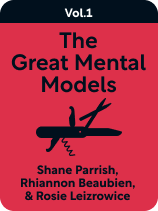

This article is an excerpt from the Shortform book guide to "The Great Mental Models Volume 1" by Shane Parrish and Rhiannon Beaubien. Shortform has the world's best summaries and analyses of books you should be reading.
Like this article? Sign up for a free trial here.
What’s Occam’s Razor theory? How can you use it to solve problems quickly and effectively?
In the first volume of The Great Mental Models series, Farnam Street founder Shane Parrish and content strategist Rhiannon Beaubien include Occam’s Razor as one of their models, as it’s a practical thinking tool. This model helps you cut to the chase when looking for solutions.
Continue reading to understand what Occam’s Razor is and how to use it.
Occam’s Razor—Explained
Philosophers, scientists, and others use philosophical “razors” in argumentation and problem-solving. A philosophical razor is a rule of thumb designed to quickly solve a problem by eliminating unlikely solutions. The general principle is to avoid overly complex answers when a simple one does the job.
The most familiar philosophical razor is Occam’s Razor. Simply put, Occam’s Razor theory states that the simplest explanation is most often the best explanation. Given various solutions to a problem, all of which solve it equally well, you should favor the simplest answer.
In the book, Parrish and Beaubien explain that simpler answers are mathematically more likely to be correct. A complicated explanation requires more factors to play nice, while a simple explanation requires just a few. Given a 50/50 chance that each factor works out, a three-factor theory is more likely to work out than a nine-factor theory.
Favoring the simpler answer saves you time and effort—you simply don’t bother to explore complicated paths when a simple path works. According to the authors, less time spent testing complicated possibilities means more time to move on to the next important task.
Applying Occam’s Razor Theory
When solving a problem or considering a situation, pause and ask, “All else equal, what’s the simplest solution to this?” This will help you find the most probable solution. For instance, you might decide between three solutions to a software engineering problem by picking the least complicated code string that does the job.
Remember that Occam’s Razor theory is a general rule rather than an absolute. Avoid using it to simplify genuinely complex problems, such as systemic societal issues, that require holistic, multi-factor solutions.

———End of Preview———
Like what you just read? Read the rest of the world's best book summary and analysis of Shane Parrish and Rhiannon Beaubien's "The Great Mental Models Volume 1" at Shortform.
Here's what you'll find in our full The Great Mental Models Volume 1 summary:
- What mental models are and how they work
- How to make better decisions by using mental models
- How to use your imagination to evaluate your choices






